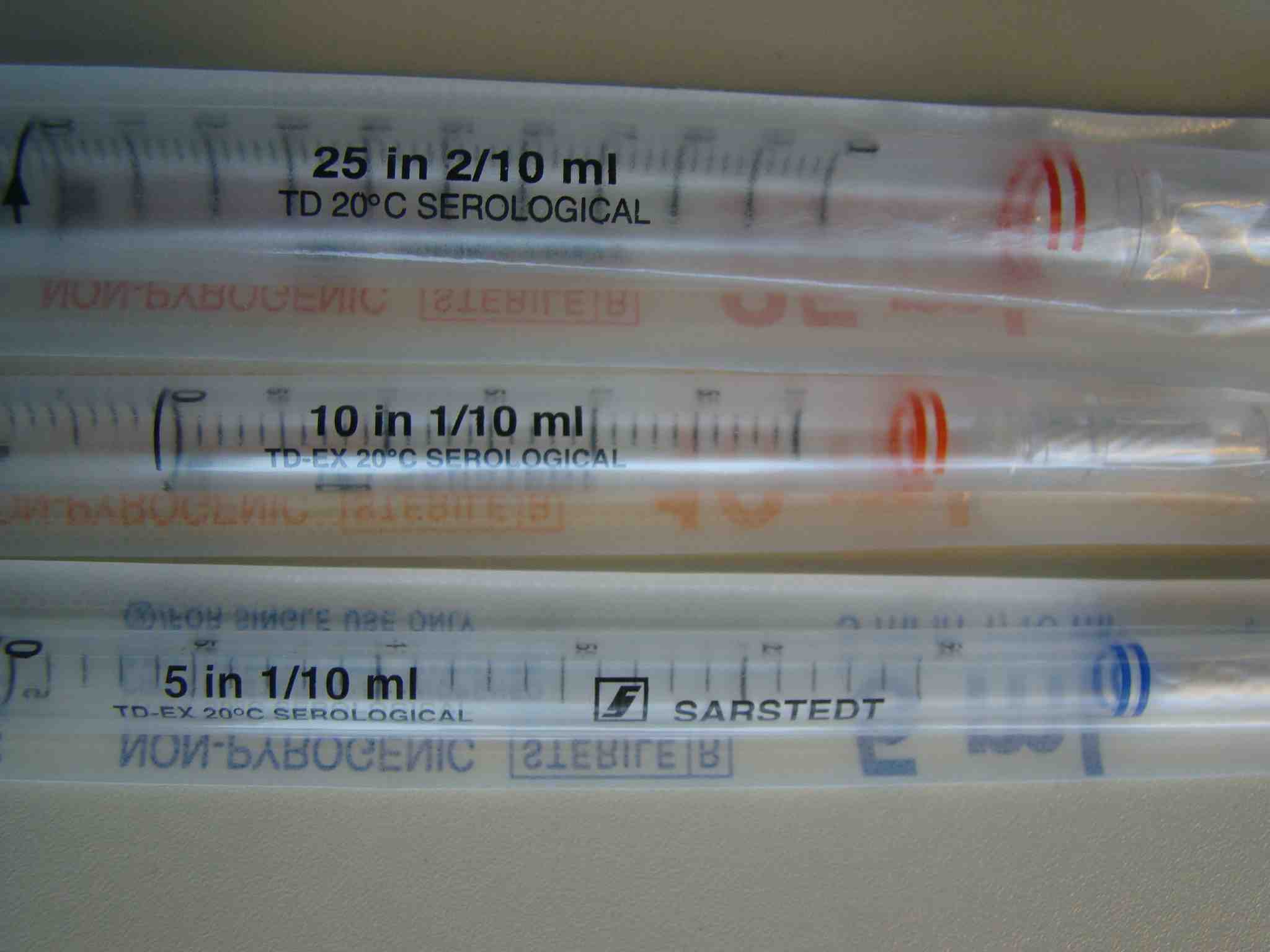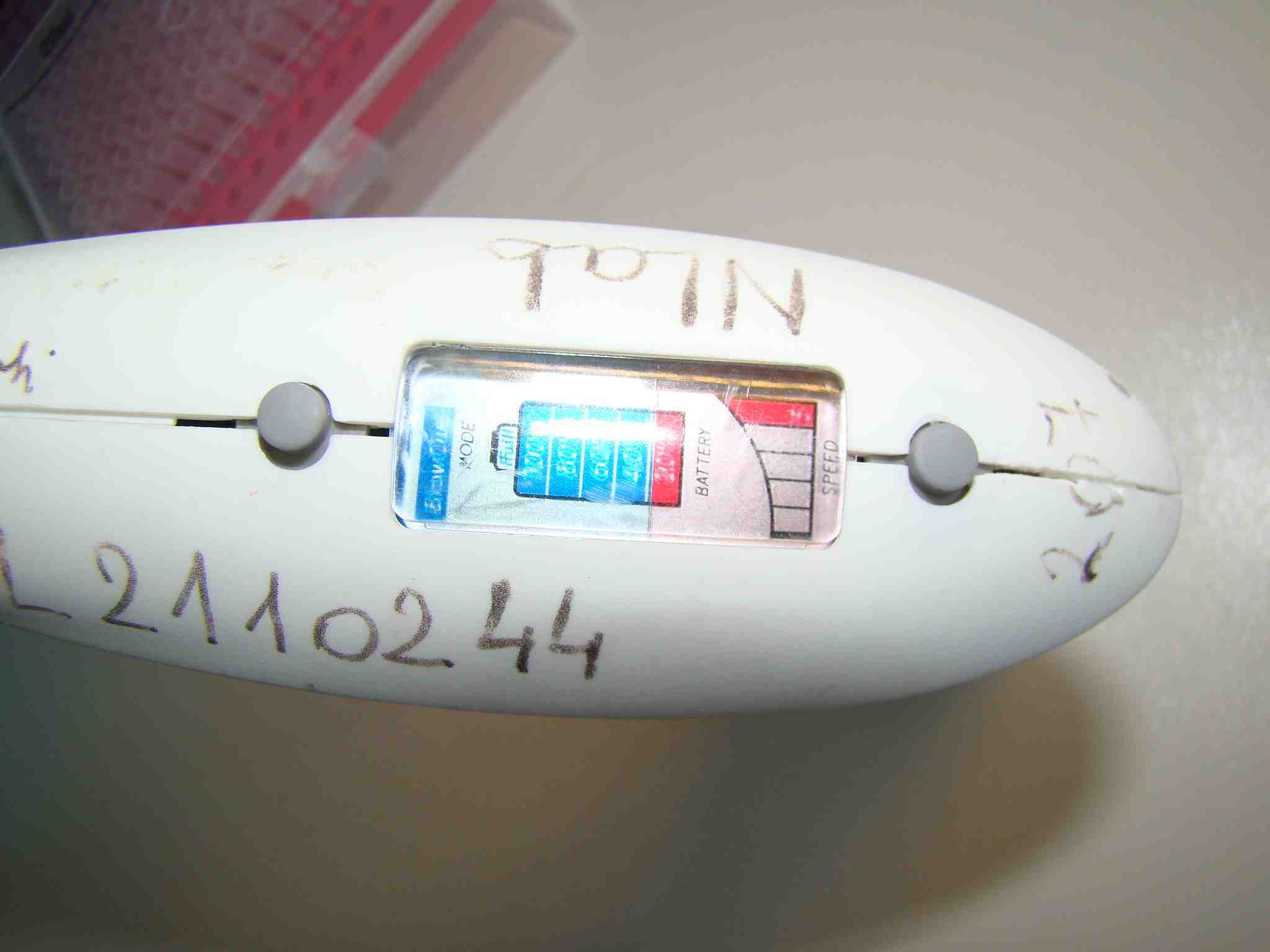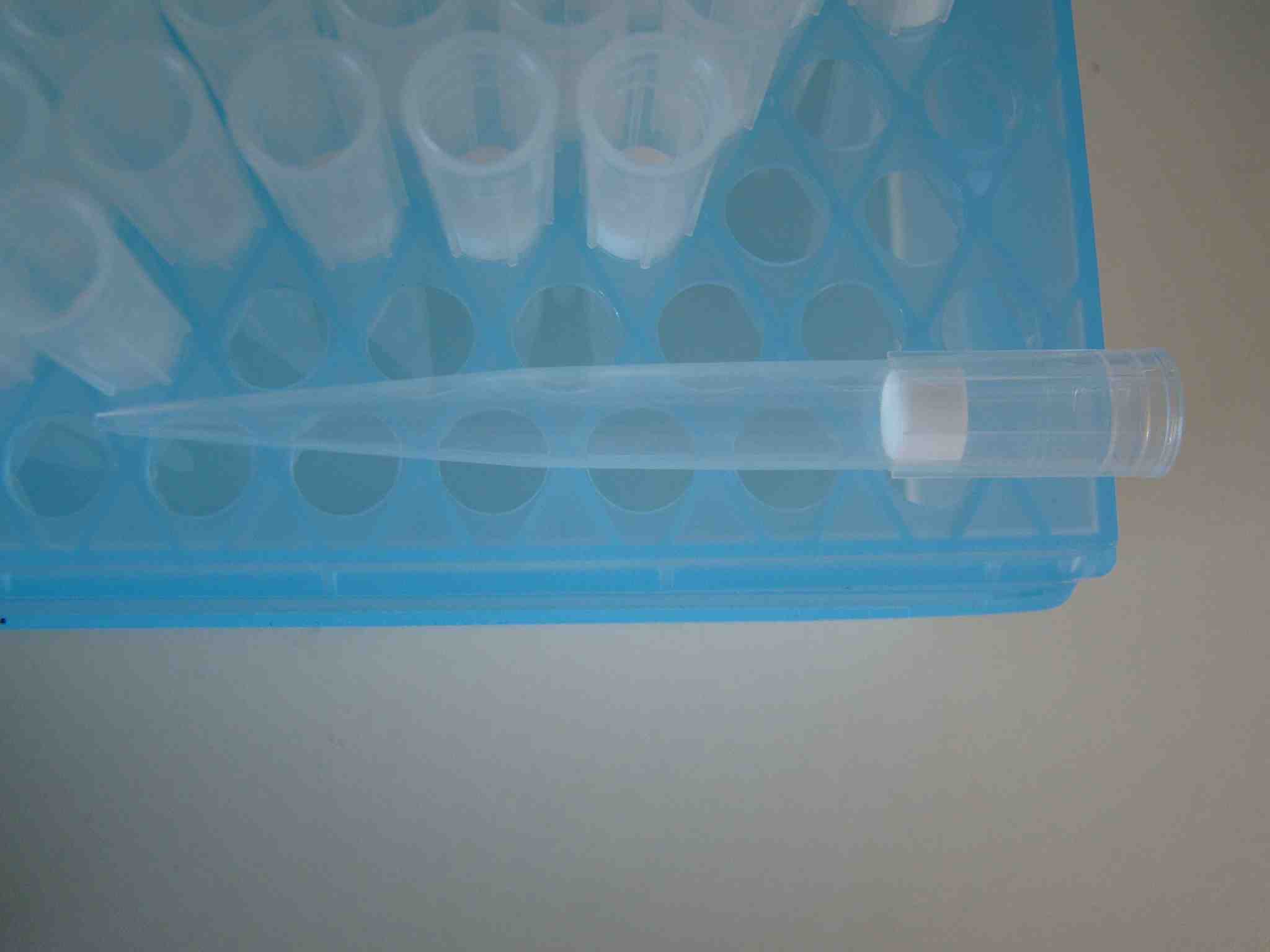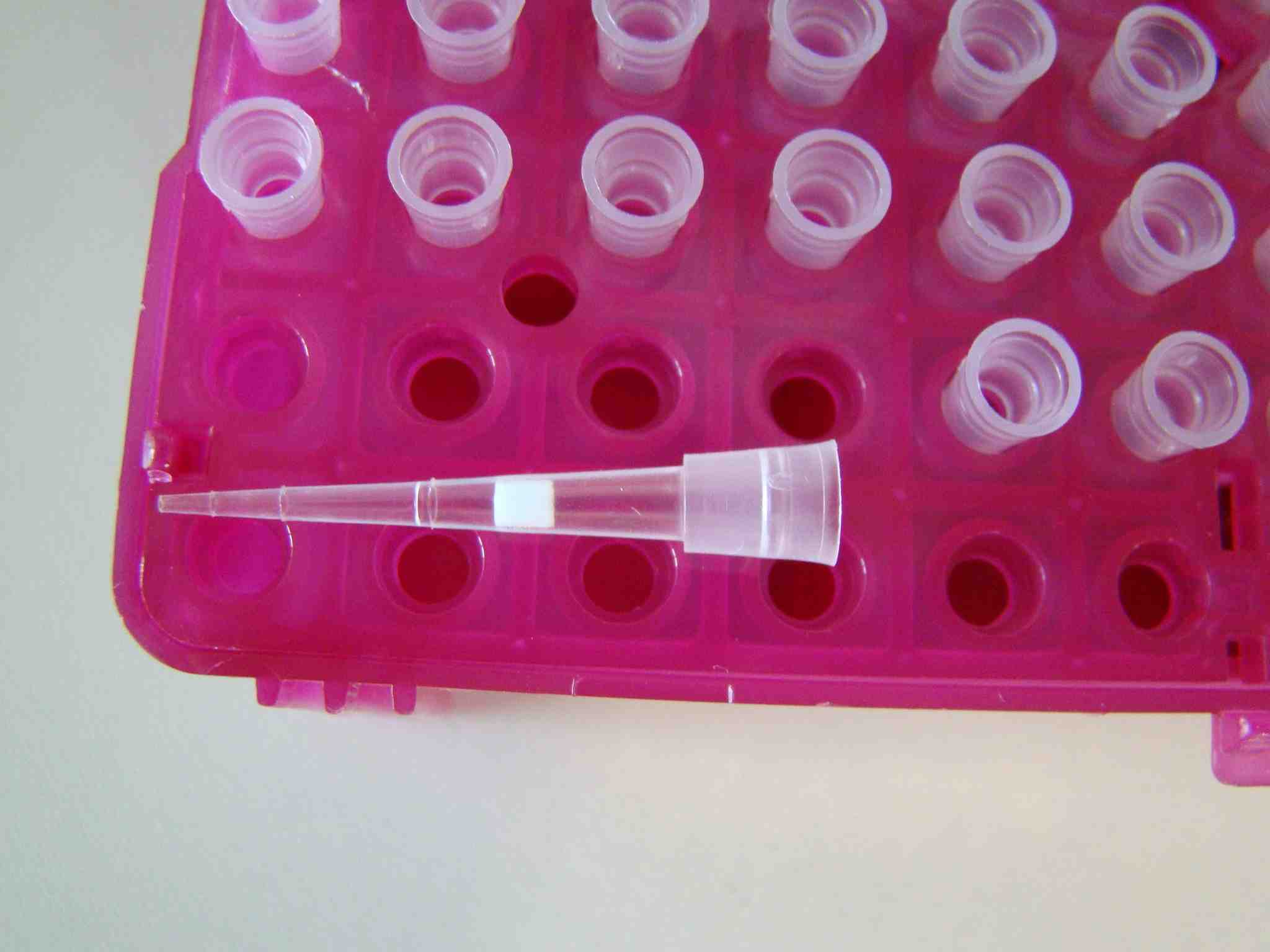Dear Colleagues,
I promised you to give an update about serological pipettes.
We use serological pipettes when we want to manipulate (to move) liquids that are in the range of 5 to 25 ml. Smaller volumes than 5ml can be measured with Gilson type pipettes, while for larger volumes than 25ml we use measuring cylinders.
Serological pipettes have a dispensable graduated tube, and a filter that is not allowing contamination with any particles from the air. The pipettes look like this for example:
[caption id="attachment_199" align="aligncenter" width="468" caption="serological-pipette"]
 [/caption]
[/caption]They can be charged, have a button to move liquids up and one for release the aspirated liquids.
We use sterile, single packed pipettes in three different ranges: up to 5ml, to 10ml and to 25ml. They have different color codes:
[caption id="attachment_201" align="aligncenter" width="468" caption="sterile-serological-pipettes"]
 [/caption]
[/caption]The same from their back:

Please have a look to my demo of how to use them:
Settings of a typical serological pipette can be seen below. You can adjust the power of the pump that enables you to move volumes as small as 1/10 of ml. And you can switch between "drop wise" and "blow out" mode. You use "drop wise" mode when you do not want to disturb the cells on the bottom of a culturing dish.
[caption id="attachment_205" align="aligncenter" width="468" caption="head-of-serological-pipette"]
 [/caption]
[/caption]A detailed demo about serological and other similar type of pipettes:
What about using Gilson type pipettes in the cell culture lab? We have sterile, pyrogenic free tips for the cell culture lab. This box contains for example certified DNAse, RNase and Pyrogen free tips. Each tip has an individual filter insert! You can use them for probably any protocoll in a standard molecular biology lab. Don't forget, they are not cheap at all...
[caption id="attachment_207" align="aligncenter" width="468" caption="barrier-tip-box-1ml"]
 [/caption]
[/caption][caption id="attachment_209" align="aligncenter" width="468" caption="barrier-tip-1ml"]
 [/caption]
[/caption]Smaller volumes can be measured with smaller barrier tips:
[caption id="attachment_221" align="aligncenter" width="468" caption="barrier-tip-10ul"]
 [/caption]
[/caption]I think we should go to the cell culture lab in one of our next post!
That's all for today, and let me have your feedback!
Plenty of good basic info regarding laboratory work is described <a href="">here.
Cheers,
Balint.
[...] Using Serological Pipettes [...]
ReplyDelete[...] Using Serological Pipettes [...]
ReplyDelete